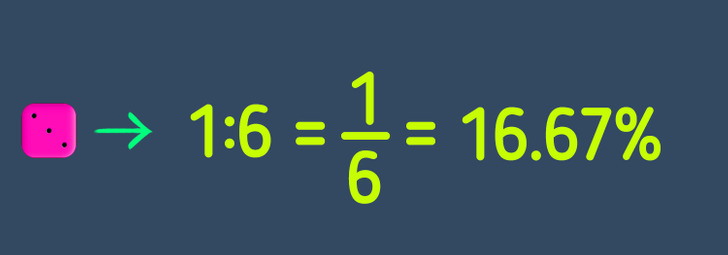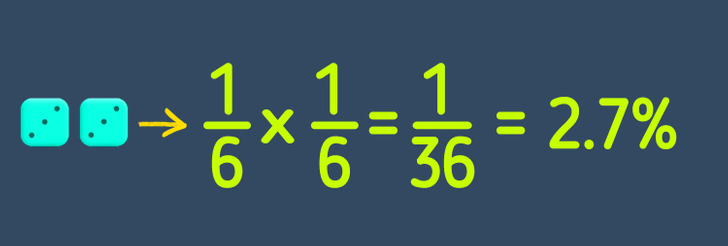How to Calculate Probability
Even though the last time many of us heard about calculating probabilities was back in school, it may be very useful to look at certain situations and estimate the chances of them happening. For example, if you know it’s probable that you will be promoted, you will be more motivated.
5-Minute Crafts is going to remind you what probability is and tell you how to calculate it.
What probability is

Probability is how likely something is to happen. When calculating probability, you are trying to approximate the chances of something happening and present them as a certain number. Even though it’s impossible to predict something with 100% certainty, probability helps you get as close to the number as possible.
Probability can be used in various situations, such as developing complex marketing plans or making weather forecasts.
But how can you calculate probability?
How to calculate probability

To calculate probability, follow this algorithm:
- Define the event with the probability of which you want to calculate. For example, you want to know the chance that the dice you roll will show 3 from the first attempt.
- Determine the number of possible outcomes. In the dice example, there are 6 possible outcomes because there are 6 numbers on a die. If it was an example with taking out different balls from a bag where there are 10 balls, there would be 10 possible outcomes.
- Divide the number of events by the number of possible outcomes. In the dice example, there’s 1 event: rolling the die. The number of outcomes is 6. So, it’s 1/6, or 16.67%.
Calculating several events

The calculation algorithm is similar to 1 event but it requires additional steps.
- Define each of the events. Before calculating, define each of the events you will work with. For example, you can calculate the probability of rolling 3 on 2 dice at the same time. Each die is a separate event.
- Calculate the probability of each event. You need to calculate the chances of rolling 3 on each die. It’s 1/6, or 16.67% as we said before. Using this information, you can calculate the probability of both events.
- Multiply the numbers you get. You can find the probability of 2 events by multiplying the 2 probabilities. If you multiply 1/6 by 1/6, you get 1/36, which is the probability of rolling 3 on 2 dice at the same time.